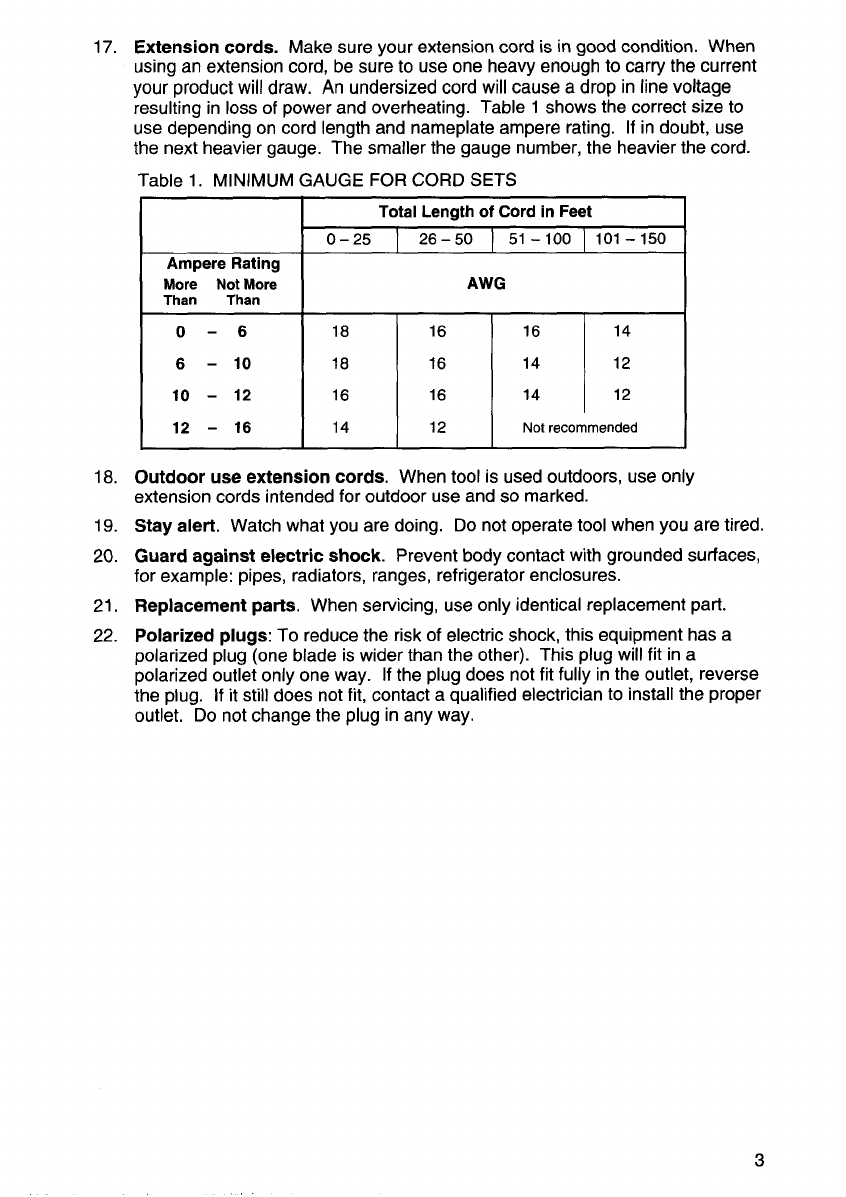
17.
Extension cords.
Make sure your extension cord is in
good
condition. When
using an extension cord, be sure
to
use one heavy enough
to
carry the current
your product will draw. An undersized cord will cause a drop in line voltage
resulting in
loss
of power and overheating. Table
1
shows the correct size
to
use depending on cord length and nameplate ampere rating. If in doubt, use
the next heavier gauge. The smaller the gauge number, the heavier the cord.
Table
1.
MINIMUM
GAUGE
FOR CORD
SETS
0-6
6
-
10
10
-
12
I
12
-
16
I
Ampere Rating
More
NotMore
Than
Than
18
18
16
14
Total Length
of
Cord in Feet
0-25
1
26-50
1
51-100
1
101-150
16 16 14
16 14 12
16 14 12
12
Not
recommended
I
AWG
I
18.
Outdoor use extension cords.
When
tool
is used outdoors, use only
extension cords intended for outdoor use and
so
marked.
19.
Stay alert.
Watch what you are doing.
Do
not operate tool when you are tired.
20.
Guard against electric shock.
Prevent body contact with grounded surfaces,
for example: pipes, radiators, ranges, refrigerator enclosures.
21.
Replacement parts.
When servicing,
use
only identical replacement part.
22.
Polarized plugs:
To
reduce the risk of electric shock, this equipment has a
polarized plug (one blade is wider than the other). This plug will fit in a
polarized outlet only one way.
If
the plug does not fit fully in the outlet, reverse
the plug.
If
it still does not fit, contact a qualified electrician
to
install the proper
outlet.
Do
not change the plug in any way.
3

















